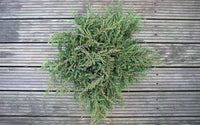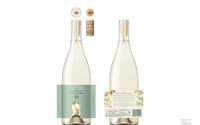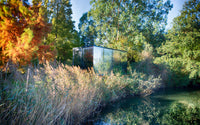I was lucky to squeeze an incredible trip to St Lucia in just before lock down. With zero pre research conducted, I was not expecting the wealth of weird and wonderful plant life that greets you as soon as you get onto the highway from the airport. Magnificent swathes of giant ferns, skyscraper like bamboos, enormous air plants & exotic flowering variegated plants with brilliant colours.

I did read that the centre of the island is dominated by rain forest, but it actually feels like it spills out all over the island from the moment you arrive. I have since learnt that there is an astonishing plant biodiversity of over 1300 wild flowering plant species and 150 species of ferns squeezed into a rugged 620 square kilometres. Whilst we didn’t explore the entire island you can get a sense of the diversity on offer when you consider the different areas from the arid rocky Atlantic coast to the cloud covered, cold, elfin shrublands to the magical rock gardens on the summit of Gros Piton.

One of the highlights of our trip was a visit to the St. Lucia Botanical Gardens, also known as the Diamond Botanical Gardens, is home of the Diamond Waterfall and the oldest botanical gardens on the island of St. Lucia. The botanical garden is located in the town of Soufrière, in the South-Western region of the island St. Lucia.

Baron de Laborie, Governor of St. Lucia, built Sulphur Baths in 1785, using funds sanctioned by King Louis XVI of France. Troops and invalids used the baths for medicinal purposes, comparing the waters to those found at Aix-la Chapelle. https://en.wikipedia.org/wiki/St._Lucia_Botanical_Gardens
Something that I have subsequently discovered is that plants in Saint Lucia have been part of traditional Caribbean healthcare for generations and are now being accepted and incorporated into modern medicine. (https://www.stlucia.org/en_UK/experiences/health-wellness/botanical-trails/)
- Cymbopogon citratus (lemongrass)
What it does: Anti-oxidant and immune boosting, it is thought to be effective against: dandruff, stomach cramps, fever, common cold, exhaustion, anxiety, insomnia, headaches, and can also be used as an antiseptic, astringent and mosquito repellent.
- Lippia Alba (Santa Maria)
What it does: Thought to be stress-busting, effective against colds, fevers, indigestion, bowel complaints, and yeast infections in any part of the body.
- Justicia pectoralis (carpenter’s grass)
What it does: A relaxing tonic, it is considered helpful for the management of endometriosis, menopausal symptoms, PMT, and menstrual pains due to its strong estrogenic, progestogenic, and anti-inflammatory properties. Also used for fever, cough, colds, sinus problems and to aid circulation.
- Justicia secunda (St John’s Bush)
What it does: Used for centuries to help women, it is thought to stimulate the womb, fallopian tubes and ovaries, assist with the proper functioning of the reproductive organs and aid menstrual cramps. Excellent to prepare for pregnancy, but should not be taken during pregnancy.
- Momordica charantia (bitter melon)
What it does: Detoxifies by causing the liver to work more efficiently, thought to help improve skin conditions, help control diabetes and normalise blood pressure, and has strong anti-oxidant properties.
- Morinda citrifolia (noni fruit)
What it does: Thought to boost the immune system, energise the body, normalise blood sugar in diabetics, and enhance prostate health. Also has pain relief properties, and can decrease swellings.
- Moringa oleifera (tree of life)
What it does: Considered one of the most nutrient rich plants on the planet, gram for gram moringa leaves contain 7x the vitamin C in oranges, 4 x the calcium in milk, 4 x the vitamin A in carrots, 2 x the protein in milk and 3 x the potassium in bananas.
It is believed to improve the immune system, promote energy, beautify the skin, promote the functioning of the liver and kidneys, assist digestion, be an anti-inflammatory, help reduce cholesterol and normalise blood pressure, regulate the thyroid, help prevent dementia, and have antibacterial, antifungal and antioxidant properties.







